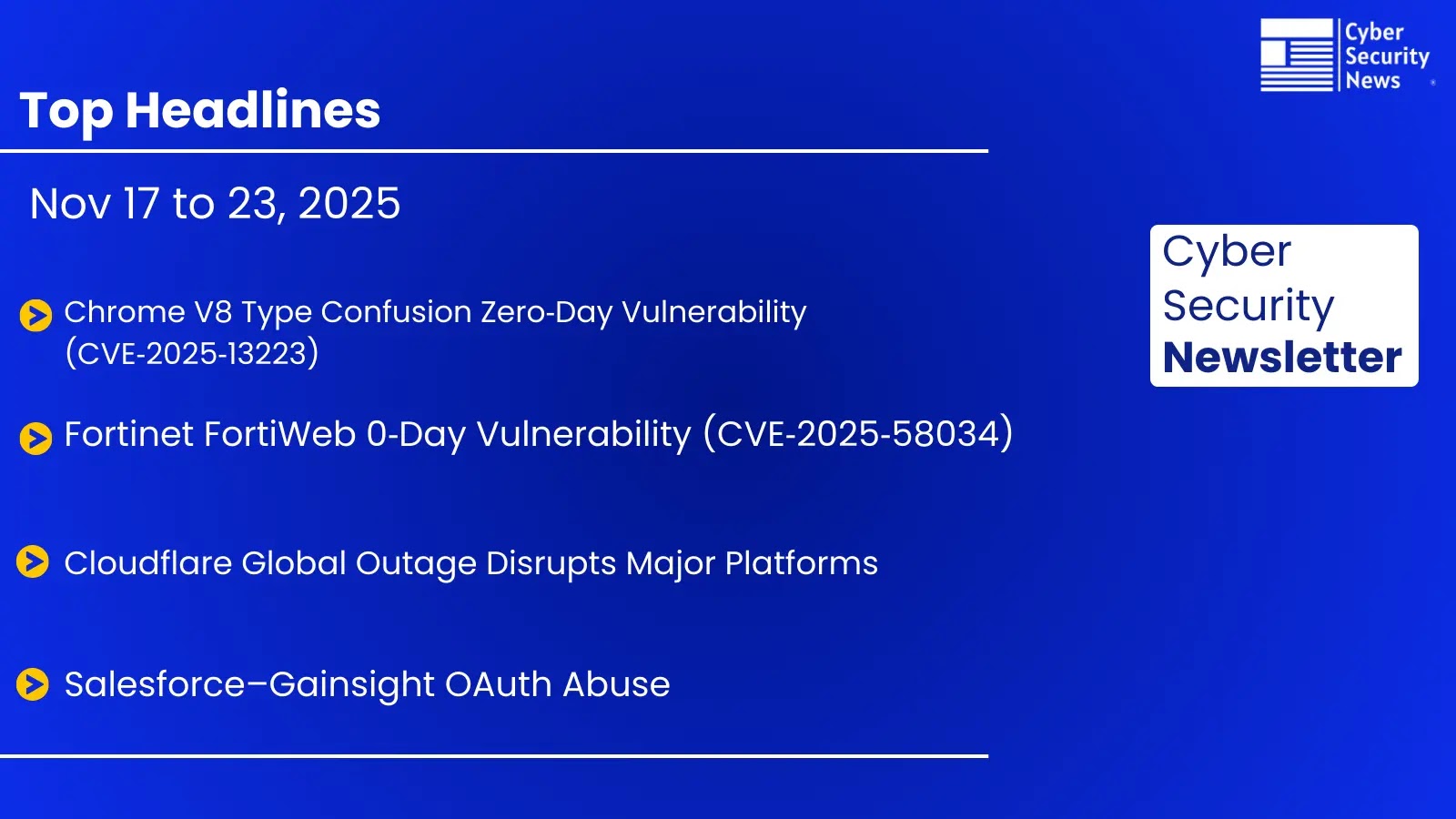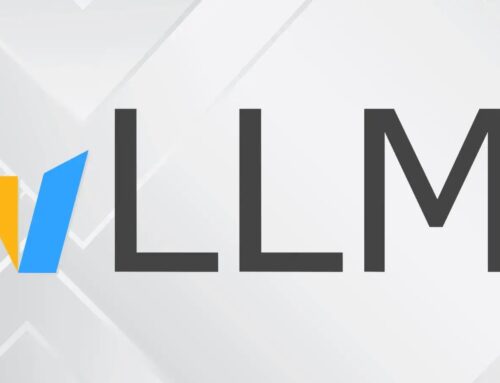
Cybersecurity News Weekly Newsletter – Fortinet, Chrome 0-Day Flaws, Cloudflare Outage and Salesforce Gainsight Breach
This week’s cybersecurity landscape delivered a stark reminder: the digital infrastructure underpinning modern society is inherently volatile, its stability directly tied to the security of the software that runs it. From critical Fortinet vulnerabilities to concerning Chrome 0-Day exploits, a widespread Cloudflare outage, and a significant Salesforce Gainsight breach, the past few days have underscored the urgent need for vigilance and robust security practices. Let’s delve into the incidents that shaped the current threat environment.
Fortinet’s Critical Vulnerabilities: A Gateway for Attackers
Fortinet, a cornerstone in many organizational network defenses, has once again been in the spotlight due to the disclosure of several critical vulnerabilities. These aren’t minor bugs; they represent potential backdoors that sophisticated threat actors eagerly seek. Exploiting such flaws in widely deployed security appliances can grant attackers deep access into protected networks, bypassing traditional perimeter defenses.
While specific CVEs for this weekly report are not detailed in the source, historical Fortinet vulnerabilities often involve authentication bypasses, arbitrary code execution, or improper access controls. Organizations relying on Fortinet products must prioritize patching and configuration reviews when such advisories emerge.
Remediation Actions for Fortinet Users:
- Immediate Patching: Monitor Fortinet’s official security advisories and apply all recommended patches and firmware updates without delay. Automate this process where possible, or establish clear procedures for rapid deployment.
- Review Configurations: Ensure Fortinet devices are configured according to best practices, disabling unnecessary services and strengthening authentication mechanisms.
- Network Segmentation: Implement robust network segmentation to limit the lateral movement of attackers should a Fortinet device be compromised.
- Intrusion Detection: Enhance monitoring for unusual activity originating from or targeting Fortinet appliances, as indicators of compromise (IOCs) can signal an active breach.
Chrome 0-Day Flaws: Browser as a Battleground
The discovery of new 0-Day vulnerabilities in Google Chrome highlights the constant cat-and-mouse game between security researchers and malicious actors. A 0-Day, by definition, is a vulnerability unknown to the software vendor (and thus unpatched) at the time of its exploitation. This makes them particularly dangerous, as they can be actively abused by cybercriminals before any defensive measures are available.
While the specific CVEs for these latest Chrome 0-Days are not provided in the source, such vulnerabilities often target the browser’s rendering engine (like V8 or Blink), leading to remote code execution (RCE) when a user simply visits a malicious website. This can result in system compromise, data theft, or the installation of malware.
Remediation Actions for Chrome Users (and all browser users):
- Keep Browsers Updated: Enable automatic updates for Chrome and all other web browsers. Promptly restart your browser when an update is available to apply the patches.
- Exercise Caution Online: Be wary of suspicious links, unsolicited attachments, and unfamiliar websites. Phishing remains a primary delivery mechanism for 0-Day exploits.
- Use Robust Endpoint Protection: Deploy and maintain up-to-date antivirus and Endpoint Detection and Response (EDR) solutions that can detect and prevent exploit attempts.
- Principle of Least Privilege: Browse the internet using accounts with minimal privileges to limit the potential damage if a browser exploit is successful.
Cloudflare Outage: The Domino Effect of Infrastructure Failure
A widespread outage at Cloudflare is not merely an inconvenience; it represents a significant disruption to a vast portion of the internet. Cloudflare provides critical services like content delivery networks (CDNs), DDoS mitigation, and DNS resolution for millions of websites. When Cloudflare experiences
issues, the ripple effect can make countless online services inaccessible globally.
While the source does not detail the exact cause of this specific outage, Cloudflare incidents typically stem from configuration errors, BGP routing issues, or hardware failures. These events underscore the interconnectedness of the internet and the single points of failure that can emerge from reliance on critical infrastructure providers.
Implications and Mitigation for Organizations:
- Distributed Architecture: Organizations should aim for a distributed architecture, avoiding single points of failure in their own infrastructure dependencies.
- Multi-CDN Strategy: For critical web assets, consider a multi-CDN strategy to ensure redundancy and resilience against a single provider’s outage.
- Robust DNS: Implement multi-provider DNS services to prevent a single DNS provider outage from taking your services offline.
- Incident Response Planning: Have a clear incident response plan that accounts for outages in third-party services and outlines communication strategies with affected users.
Salesforce Gainsight Breach: The Supply Chain Vulnerability
The breach involving Salesforce and Gainsight serves as a potent reminder of the pervasive threat of supply chain attacks. Gainsight, a customer success platform, is often integrated deeply with Salesforce, a leading CRM. A compromise in one vendor, especially one with extensive access to customer data, can directly impact the security posture of its clients.
While the specific details of the breach (e.g., how it occurred, what data was exposed) are not described in the source, such incidents typically involve unauthorized access to customer data, intellectual property, or confidential business information. The trust placed in third-party vendors makes them attractive targets for adversaries.
Mitigating Supply Chain Risks:
- Vendor Risk Management: Implement a rigorous vendor risk management program, assessing the security posture of all third-party providers with access to sensitive data or systems.
- Least Privilege Access: Ensure third-party integrations and accounts operate with the absolute minimum necessary permissions.
- Regular Audits: Conduct periodic security audits and penetration tests on third-party integrations.
- Data Minimization: Store only the essential data with third-party vendors and encrypt sensitive information both in transit and at rest.
- Monitoring and Logging: Implement comprehensive monitoring and logging for all activities related to third-party integrations, looking for anomalous behavior.
Key Takeaways from a Volatile Week
This week’s events underscore several critical themes in cybersecurity: the persistent threat of zero-day exploits, the cascading impact of infrastructure failures, the importance of diligent patching, and the ever-present danger of supply chain compromises. Organizations and individuals alike must maintain proactive security postures, prioritizing rapid vulnerability management, robust incident response planning, and continuous vigilance against evolving threats. The stability of our digital world depends on our collective commitment to strong cybersecurity practices.





